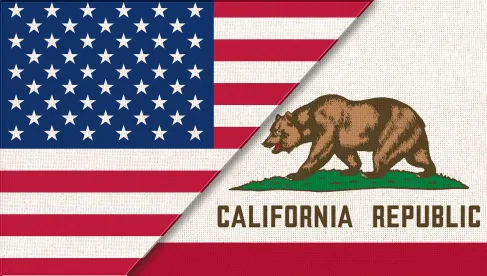On March 3, 2023, a new California state public health officer order regarding COVID-19 was issued with an effective date of March 13, 2023. The new order includes important information for employers doing business in California. Here are the highlights of the new order.
Face Coverings
Pursuant to the order, the current requirements in the Guidance for the Use of Face Masks issued by the California Department of Public Health (CDPH) will remain in place through April 2, 2023, after which time (i.e., effective April 3, 2023) they will become recommendations. Currently, the masking requirements include the use of U.S. Centers for Disease Control and Prevention information about COVID-19 Community Levels (CCLs) in each county to decide which prevention behaviors to use and when, based on individuals’ “own risk[s] for severe illness and [those] of members of their household[s], their risk tolerance, and setting-specific factors. CCLs are based on hospitalization rates, hospital bed occupancy, and COVID-19 incidence during the preceding period.”
Isolation Recommendations and Definitions
The order updates the isolation recommendations, aligning them with the CDC’s recommendations for Isolation and Precautions for People with COVID-19. According to the order, positive COVID-19 cases “should continue to isolate for 5 days, but may leave isolation after 5 days, if they are feeling well, symptoms are improving and are fever-free for 24 hours.”
An updated definition of “infectious period” is also included in the order to align with the updated isolation recommendations for persons infected with COVID-19. The order defines “infectious period” as follows:
- “For symptomatic confirmed cases, 2 days before the confirmed case had any symptoms (symptom onset date is Day 0) through Days 5–10 after symptoms first appeared AND 24 hours have passed with no fever, without the use of fever-reducing medications, and symptoms have improved, OR
- For asymptomatic confirmed cases, 2 days before the positive specimen collection date (collection date is Day 0) through Day 5 after positive specimen collection date for their first positive COVID-19 test.”
For the purposes of identifying close contacts and exposures, symptomatic and asymptomatic confirmed cases who end isolation in accordance with the CDPH’s Isolation and Quarantine Guidance are no longer considered to be within their infectious period.
The order defines “confirmed case” as “[a] person who has received a positive result of the presence of SARS-CoV-2 virus as confirmed by a COVID-19 viral test or clinical diagnosis.”
The order defines “close contact” to mean the following:
- “In indoor spaces 400,000 or fewer cubic feet per floor (such as home, clinic waiting room, airplane etc.), sharing the same indoor airspace for a cumulative total of 15 minutes or more over a 24-hour period (for example, three separate 5-minute exposures for a total of 15 minutes) during a confirmed case’s infectious period.”
- “In large indoor spaces greater than 400,000 cubic feet per floor (such as open-floor-plan offices, warehouses, large retail stores, manufacturing, or food processing facilities), being within 6 feet of the confirmed case for a cumulative total of 15 minutes or more over a 24-hour period during the confirmed case’s infectious period.”
Key Takeaways
The California Division of Occupational Safety and Health’s (Cal/OSHA) COVID-19 prevention non-emergency regulations took effect on February 3, 2023, and remain in effect until February 3, 2025. Pursuant to the Cal/OSHA regulations, employers must provide face coverings and ensure they are worn when required by orders from the CDPH. Thus, under the new CDPH order, face coverings are currently required by CDPH pursuant to the CCLs, but as of April 3, 2023, these will become recommendations.
According to Cal/OSHA’s answers to frequently asked questions (FAQs) regarding the COVID-19 prevention nonemergency regulations, all employers must do the following:
- “Provide and ensure use of face coverings during outbreaks and major outbreaks.”
- “Provide and ensure use of face coverings when employees return to work after having COVID19 or after a close contact.”
- “Upon request from employees, provide face coverings at no cost to the employee.”
When addressing COVID-19 in the workplace, employers may refer to the CDPH’s Isolation and Quarantine Guidance as provided in the new state public health officer order until an employee is no longer an infection risk and when making a determination as to when an employee may return to work. In non-outbreak situations, employers are not always required to exclude close contacts, but employers may be required to implement effective policies to prevent transmission after a close contact, as defined by the order.
Ogletree Deakins will continue to report on developments with respect to California’s public health orders and COVID-19 prevention non-emergency regulations and will post updates on the California and Workplace Safety and Health blogs and in the firm’s Coronavirus (COVID-19) Resource Center.





 />i
/>i

